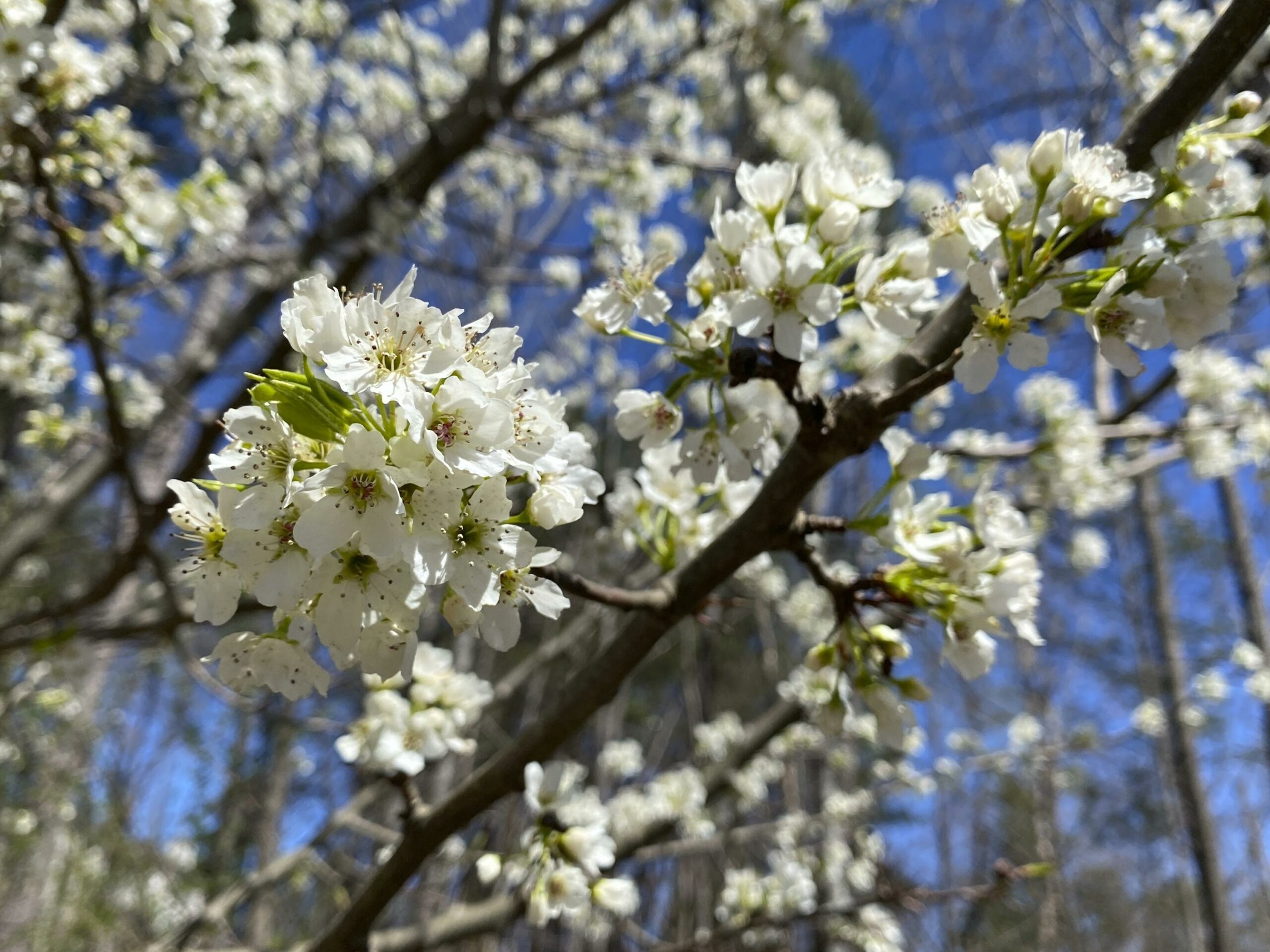Callery pear: Ornamental favorite or invasive menace?

JACKSONVILLE, Ill. — Callery pear (Pyrus calleryana) has been blooming throughout Illinois. Over the years, it has been a popular tree to plant, especially in residential areas. Trees produce numerous white flowers in the spring and have attractive glossy leaves that will turn a brilliant red-orange in the fall. However, they are also becoming increasingly problematic across Illinois and the United States.
How did Callery pear get here?
Callery pear has been imported to the U.S. multiple times. It was originally imported from Asia in 1909 to the Arnold Arboretum (Harvard University) and again in 1916 by the U.S. Department of Agriculture for the development of fire blight resistance in the common pear (Pyrus communis).
In the 1950s, the ornamental value and hardiness of Callery pears were recognized, leading to the development of several cultivars, including the most well-known ‘Bradford’. By the 1980s, Bradford pear had become the second most popular tree in the U.S.
It has been widely planted due to its quick growth, adaptability to a wide range of soils, and pollution and drought tolerance. The trees also have a symmetrical to round shape that many people find desirable in addition to their abundant spring floral display.
The problem(s) with Callery pear
Unfortunately, Callery pear has several negatives. They have narrow branch angles, and this, along with their rapid growth, makes them rather weak. Trees often split and break apart during storms and frequently don’t last longer than 20 years before they begin to split apart. Additionally, while the floral display may be impressive, the smell is not.
When “Bradford” pears were originally introduced to the landscape trade, they were touted as having sterile fruit. This is because they are self-incompatible, meaning they require cross-pollination from another cultivar to produce seeds. Since most of the Callery pear trees that were originally planted were ‘Bradford,’ there was very little pollination occurring.
Now that several cultivars, such as “Cleveland Select,” “Aristocrat,” “Chanticleer” and “Redspire” are being grown in landscapes, trees have been able to produce viable seeds, and Callery pear has escaped into the environment. Birds and other wildlife will consume the fruits from trees and disperse them.
Driving along highways and interstates, you can often see thickets of Callery pears in fields along the roadside. They are also showing up in natural areas. Callery pears can quickly become established in an area due to their rapid growth as well as their ability to produce large amounts of seed. Once they become established, Callery pears can form dense thickets that push out native species that cannot compete with them.
What should I do with my Callery pear?
While Callery pear can still be purchased in Illinois (as of this writing, it is not listed in the Illinois Exotic Weed Act, which regulates invasive species), it is not a plant we should be planting in our landscapes. If you have a Callery pear in your landscape, consider removing it.
If you are considering planting a tree or would like to replace your Callery pear, consider alternative trees such as flowering dogwood (Cornus florida), redbud (Cercis Canadensis), serviceberry (Amelanchier spp.), and American plum (Prunus americana). These trees have characteristics similar to Callery pears, such as low maintenance, small stature, and beautiful spring blossoms without the invasiveness.
Miss Clipping Out Stories to Save for Later?
Click the Purchase Story button below to order a print of this story. We will print it for you on matte photo paper to keep forever.

